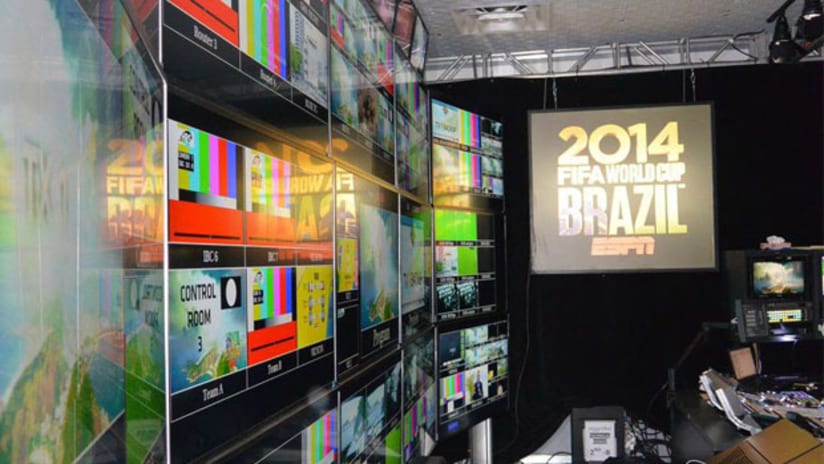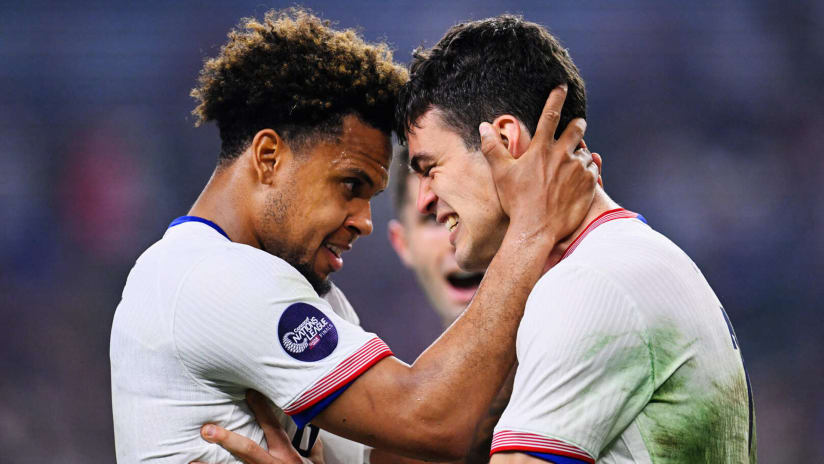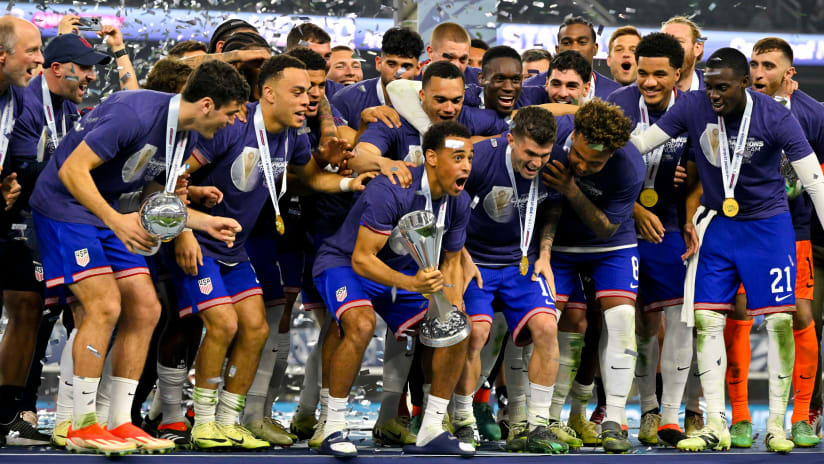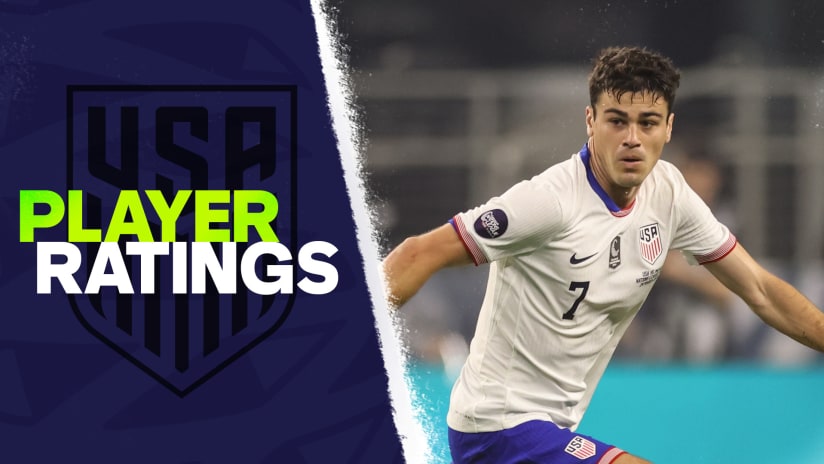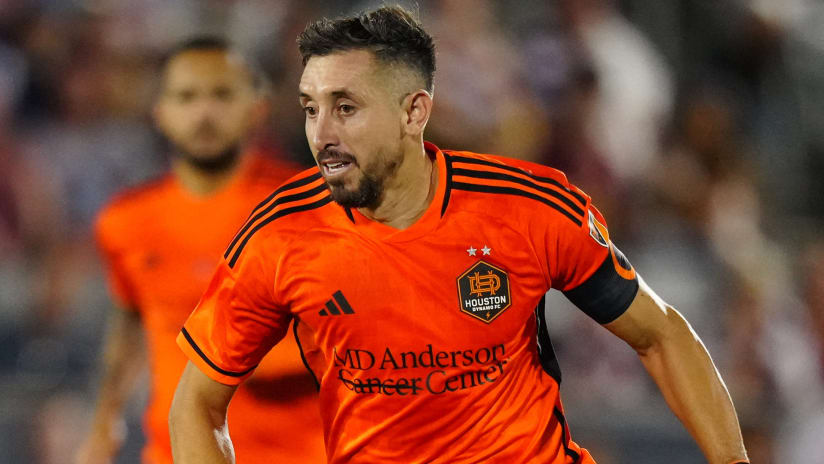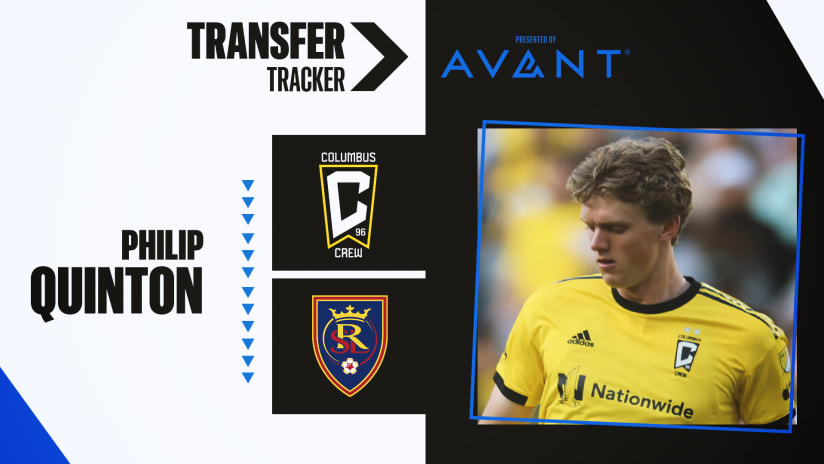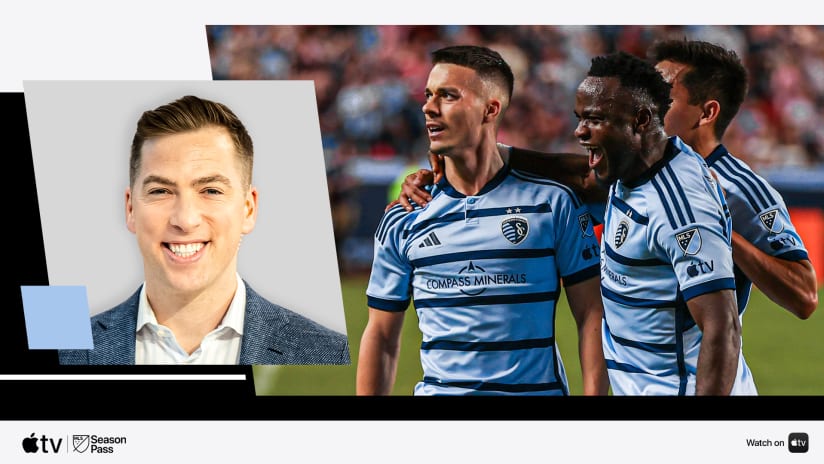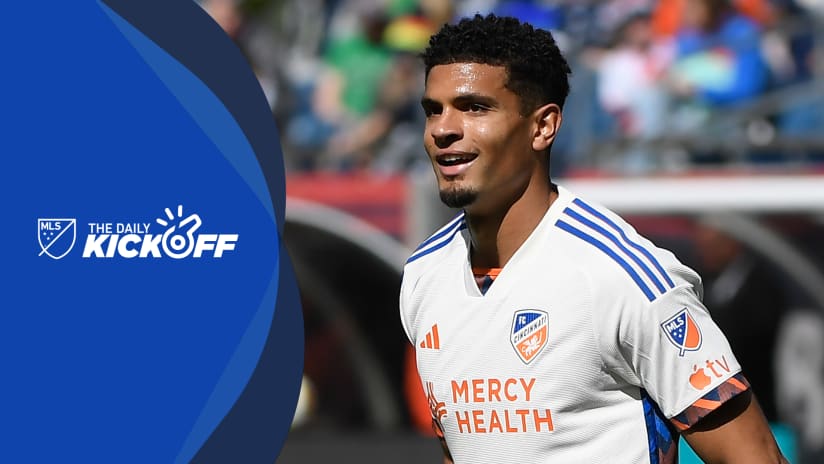RIO DE JANEIRO – With one hand on his head and another rapping the drywall of his temporary office built above a fish market, Jed Drake lets out a sigh.
That’s the road talking. That’s the concierge confirming your stay for 52 nights. That’s take out food and plastic forks, and one glass of wine at the hotel bar before bed. That’s Groundhog Day in Brazil, again and again and again.
“I’m exhausted,” he says. “But everyone is exhausted. It’s the World Cup. It’s what you do.”
It’s June 19, which means 25 days down and 27 left to go. As a senior vice president and executive producer with ESPN, Drake is the man in charge of the network’s coverage of the tournament across 12 markets in Brazil, and he won’t leave here until July 15, long after the final ball is packed away.
Right now Drake and roughly 400 other ESPN and employees are shuffling around the network’s 2,000-square-foot broadcast studio and adjacent control room and workspace on Copacabana Beach. There are also six different broadcast crews out there on the road somewhere working live games, hoping not to get stuck in the often dicey limbo of Brazilian air travel.
There’s very little subtlety about the way ESPN has gone about blowing out this World Cup.The plan includes live coverage of all 64 matches consisting of six rotating teams of play-by-play and color commentators, plus 290 hours of coverage by the network’s expert analysts in a studio built overlooking one of the most iconic stretches of beach in South America.
The first of Drake’s nine trips here came in the fall of 2011, when he began scouting locations for ESPN’s temporary headquarters in Brazil. After setting up shop in Johannesburg for the World Cup in 2010, Drake and ESPN knew they wanted something even more memorable in Rio de Janeiro, and they got it. The massive control room was built literally steps from the beach, there are two outdoor sets for exterior segments shot under towering palm trees, a set built exclusively for ESPN International and a main studio that offers panoramic views of the crashing surf off Copacabana.
“Everything on the other side of this wall will not exist in five weeks,” Drake says. “Everything will magically disappear. I walk into the studio sometimes and I think, ‘It’s a damn shame we gotta tear this thing down.’”
---
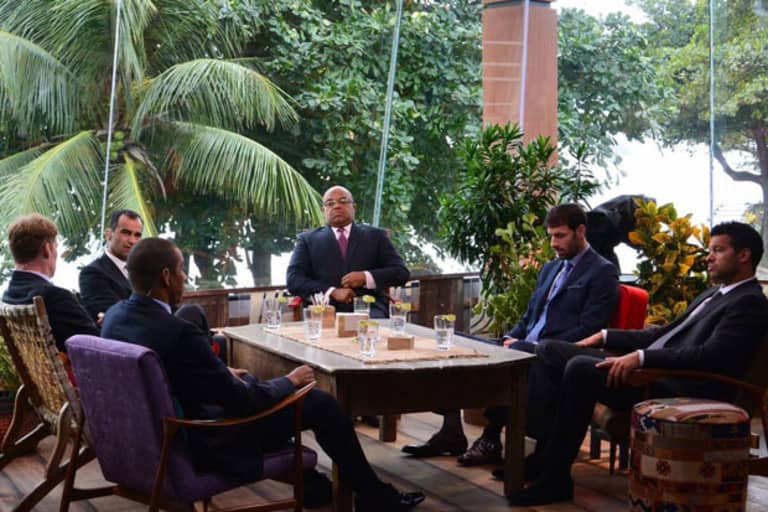
ESPN anchor Mike Tirico (center) sits with five of the network's analysts on the set of the network's "Last Call" series, filmed on a faux-island stage that resembles a stage off the set of Gilligan’s Island.
---
This day is much like the rest inside the main studio, beginning with the network’s 30-minute pregame show at 12:30 pm local time. There are three games on the docket today, none bigger than the 4 pm kickoff between Uruguay and England, a match that will eventually help ESPN pad ratings stats that have already drawn more than 30 percent more viewers in the US than the first week of games in South Africa did four years ago.
The desk talent rotates every game, but the formation stays largely the same: One host and two commentators. ESPN veteran Bob Ley anchors the coverage of the first game between Colombia and Ivory Coast along with tactical pro and Everton manager Roberto Martinez by his side.
Analyst Taylor Twellman was supposed to be off today after some travel hassles returning from Natal, but a medical issue with one of the other analysts has changed the rotation. Former Brazilian player Gilberto Silva recently underwent meniscus surgery and is suffering from an allergic reaction that forced a trip to a local hospital in Rio, so Twellman steps in.
Two topics dominate the mid-morning conversation: The news that Jozy Altidore’s hamstring injury will keep him out of the US national team’s match against Portugal on Sunday, and the cloth boutonnières that Twellman has pinned to his lapel while on air.
“People are making fun of me for this on Twitter, but blue is for the group stage,” he says. “I got eight more colors. I got lemon meringue coming.”
- PREVIEW SHOW: MLSsoccer.com breaks down USA-Portugal
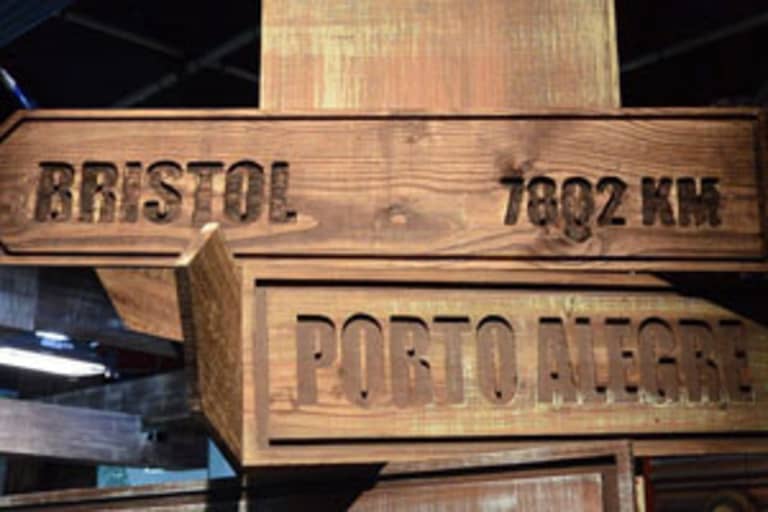
Despite the distance back to ESPN's headquarters in Connecticut, there's only a 1-2 second delay between what's filmed live in the studio and what appears on the television in the States. (ESPN)
There’s no such flair for the 40-year-old Martinez, the group’s straight-laced analytical mind who made his debut with ESPN in 2010 to rave reviews and later worked the 2012 Euros. The technological toys that surround the group – two gigantic, interactive touch screen televisions used largely for tactical segments – are a playground for Martinez, who breaks down the influence of Ivory Coast striker Didier Drogba as the Elephants aim to knock off Colombia in Brasilia.
“That segment was okay, man,” Twellman quips after Martinez finishes and Ley throws the show to commercial. “But I just got a text from a friend who said that was the most boring thing he’s ever watched.”
Says Ley, the ESPN veteran since the network’s first day in 1979: “Concise, concise. Good segment boys.”
Colombia eventually win the game, the group wraps their postgame show and the shift is on. Monday Night Football point man Mike Tirico steps in for Ley and recounts a story of running into Detroit Lions defensive end Ndamukong Suh at the hotel earlier in the day, and Martinez studies on the monitors intently while plotting out tactical storylines for the England game.
Twellman heads back to the group’s beachfront hotel to rest and in steps commentator Alexi Lalas, who joined the network full time in 2008. Largely adored by American soccer fans but sometimes loathed by European soccer fans, Lalas is the biggest lightning rod for Twittter chatter that ESPN has when it comes to soccer, a role he’s gradually accepted and even embraced by tangling with his online critics.
Today he’ll add fuel to the fire by asserting that beleaguered striker Wayne Rooney is the only world-class player on the England roster, a phrase he’ll recycle at least five times before midnight. He goes on to praise Rooney in the team’s eventual loss to Uruguay – “you can’t blame Wayne Rooney for this” -- but the “world-class player” comment expectedly sticks in the craw of some fans who have grown to despise Lalas.
"Alexi Lalas just shut up and don't say anything about the match," says one tweet.
"I wish Alexi Lalas would Go. Away," says another. "Such an embarrassment."
After Luis Suarez scores two goals in Uruguay’s win, Tirico recounts a number thrown to him by ESPN stat guru Paul Carr, who feeds the group digestible tidbits all day: It’s the first time England have lost two games in the same World Cup since 1950.
“Dagger in,” Lalas says of the Suarez winner, “and turn.”
–-
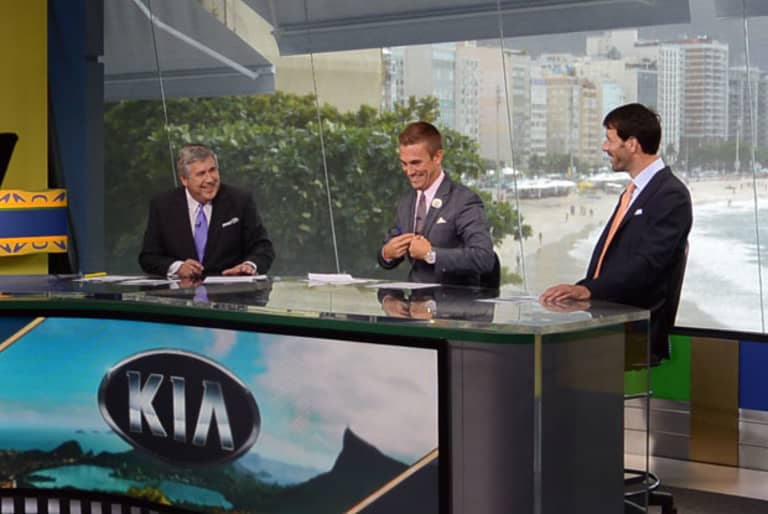
Longtime anchor Bob Ley (left) sits with analysts Taylor Twellman (center) and Ruud van Nistelrooy on ESPN's main set in Rio De Janeiro. The city's iconic Copacabana Beach unfolds in the background.
---
Drake, meanwhile, has disappeared to the network’s two-story control room, perhaps the biggest achievement of ESPN’s Brazilian encampment.
Unlike when the network covered the World Cup in South Africa, all of their operations are under one roof in Rio de Janeiro. The studio and control rooms are connected by fiber optic cables to the International Broadcast Center nearby, which in turn is connected to edit suites at the network’s headquarters in Bristol, Conn., and New York City. The group can take a segment edited by their staffers in Bristol and roll it to air from Brazil at a moment’s notice, and there’s only a 1-2 second delay between what you see live in the Rio de Janeiro studio and on air in the United States.
Drake and ESPN had the studio built in a warehouse in Sao Paulo and tweaked it to their desire over several months before it was disassembled and put together again on Copacabana. The reassembly began in late April and was done by the same local company that handles Paul McCartney’s rock concerts when the singer comes to Brazil.
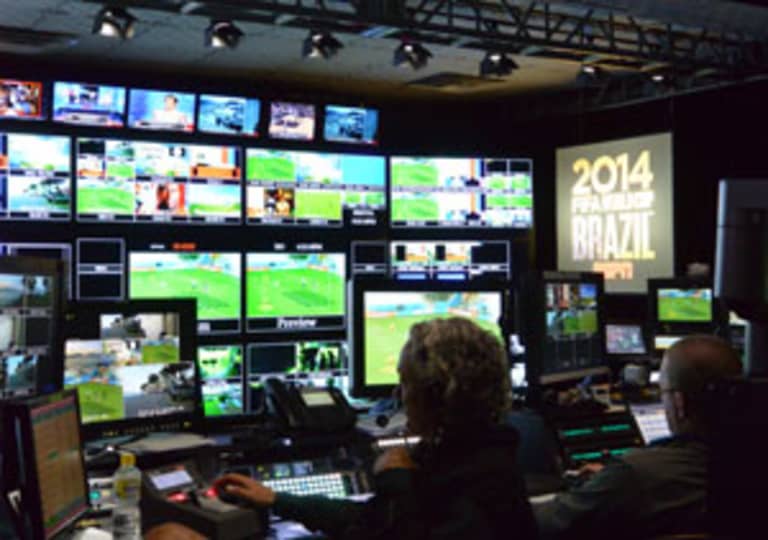
ESPN's two-story control room was first designed and built in Los Angeles before it was deconstructed and reassmbled in Rio de Janeiro. (ESPN)
The control room was first built offsite, too, in a Los Angeles warehouse. Drake and his crew examined it thoroughly and tailored it with such detail that monitors were moved inches at a time during the drafting phase in California. Then it was all replicated to the same exact measurements months later and 5,000 miles away.
The entire compound is powered by three giant generators that Drake calls “the beasts.” They are each twice the size of a meat freezer, and they hum quietly outside the control room in a space formerly reserved for a fish market. There’s also a fourth generator that powers the studio’s lights, a satellite truck connected to the IBC in case of emergency and bundles of cables winding down back corridors and around scaffolding, all just steps from the ocean.
The network’s headquarters are actually built adjacent to a members-only sailing club and the Forte de Copacabana, a military base on the tip of a small peninsula that jets out off the beach. Both the sailing club and the military base will be operational throughout ESPN’s stay, as will a sea-and-air rescue station that periodically lands helicopters outside the studio window, forcing the ESPN crew to lower their 50-foot exterior jib and wait until the rescue is over.
It can’t always go smoothly. Not long before the first program aired on this day the studio lost power because some circuits malfunctioned during a rare day of heavy rain on the beach. A similar scenario played out back on June 7 ahead of the coverage of the US’ final World Cup tuneup game against Nigeria in Jacksonville, when the power went out and it was unclear if the show would even get on air.
“But they pulled it off,” says editorial director Marc Connolly. “I don’t know how, but you never would have known we had no power before right before the show started.”
---
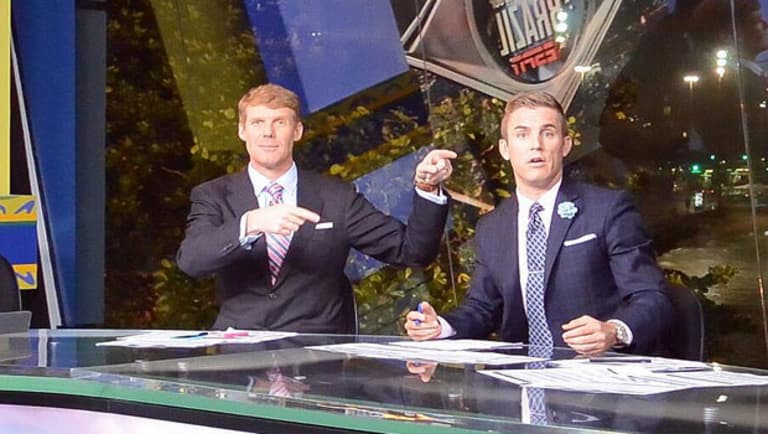
Analysts Alexi Lalas (left) and Taylor Twellman are two of the network's mainstays on both World Cup and Major League Soccer coverage. Lalas has been withe company full time since 2008, Twellman since 2011.
--
The last game of the night warrants another change in the desk lineup, as Tirico steps away and British newcomer Lynsey Hipgrave steps in as the host. Martinez is done for the day and is replaced by Michael Ballack, the former German national team captain who dons a camera-ready sleek black suit and two-day stubble.
The match is a snoozer. Greece and Japan play to a lifeless draw that will be forgotten almost immediately, and there’s another shift before the network wraps the day with a program called World Cup Tonight and then Last Call, a show that tries to encourage more late-night casual conversation among the experts on a faux-tropical set that looks like something from Gilligan’s Island.
“Are you gonna be fun tonight?” Tirico jabs at Ballack before the cameras roll. “Let’s be fun tonight!”
The Last Call show is Drake’s pride and joy. He’s assembled what he calls a “field of dreams” of talent and he wants them to interact casually and candidly on the last show of the night, and for the most part it works. Twellman has returned to the set to poke shots at Ballack for carrying a slight cold – “don’t come near me, don’t touch me!” – and because someone forgot to take down Ballack’s dinner order during the last match of the night.
“Seriously,” Ballack chirped after getting his food an hour before. “Can someone please bring me a Coke?”
The most contentious part of the Last Call conversation on this night hinges on Ballack’s assertion that the US team is in dire trouble without the injured Altidore. Ballack also insists that head coach Jurgen Klinsmann -- his former manager with Germany in 2006 -- has helped make the American players better at regaining the ball after losing possession, a point Lalas contends as ridiculous.
“I know you’re an American, so there’s this pride…” Ballack says. “But on this level … it’s just another level.”
The show’s best moment comes from Twellman, who blasts FIFA in the wake of a scary moment during the England game when Uruguayan midfielder Alvaro Pereira took a knee to the head and remained motionless on the field in Sao Paulo. Pereira was helped off the field and appeared wobbly before a team doctor asked for him to be replaced, only to insist he was fine. He was put back in the game without any more examination.
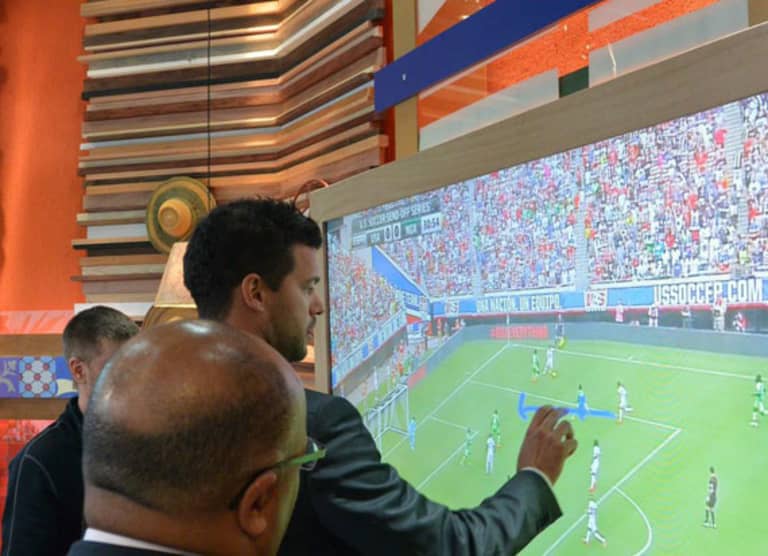
Analyst Michael Ballack uses one of the network's giant touch screen televisions to break down a play on the main set. (ESPN)
Twellman, who’s been an outspoken advocate for concussion safety awareness since his own career was cut short by a blow to the head in 2008, fires away.
“There’s no protocol!” he says. “FIFA has to address this, because it’s 2014, not 1950. I couldn't care less about knees, arms and ankles. You only get one brain.”
The group wraps the show at 11:30 pm local time, completing more than 12 hours on the air from the studio. Lalas and Martinez will be back the next day, while Twellman will move on with his play-by-play partner Ian Darke to Manaus, the Amazon City that will host the US-Portugal match on Sunday.
“Good show tonight,” Tirico insists before the group piles in a van back to the hotel. “Good show.”
--
ESPN hasn’t disclosed just how much their Rio set cost the network, and they likely won’t reveal any numbers anytime soon. Asked for a ballpark figure on the final tab for all of this that buzzes around him, Drake smiles and rubs his hand through his hair.
“Oh I could tell you exactly how much it costs,” he says with a smile. “Let’s just say it wasn’t cheap.”
To that end, it was probably a good idea to blow the bank on this one. After broadcasting each World Cup since the tournament came to American soil in 1994, ESPN lost out on the rights to the World Cup to Fox in 2018 and 2022 in a blind auction worth a reported $425 million, more than quadrupling the $100 million ESPN had paid for the 2010 and 2014 television rights.
The tournament has traditionally been a ratings darling for the network and has already proven that again this summer, with record numbers piling in for the US team’s win over Ghana last week. The network reported that it was the most-viewed men's soccer match in ESPN's history, averaging 11.1 million viewers on the channel.
The first 20 matches of the World Cup also drew an average of 3.8 million viewers for ESPN, ESPN2 and ABC combined, up 31 percent from 2010.
For Drake, it’s a satisfying way to go out. In an interview with Sports Business Daily last year, he admitted this World Cup will be his last, and that he’ll return to his traditional roles producing ESPN staples like Monday Night Football, NASCAR and Wimbledon, which will open play in London on Monday while most of the world is focused on Brazil.
"The next time ESPN could acquire the rights would be in 2026," Drake said in the interview. "By then, I hope to be concentrating on bonefishing in the Bahamas."
Drake’s wife and daughter arrived in Rio on June 20, a welcome respite from the grind that reached its halfway point this week. But there’s still nearly four weeks to go at this desk, down in that control room and back at the hotel, all in an exhausting attempt to send ESPN’s World Cup coverage out with a picture-perfect finish.
“I know people are talking about how this is our last World Cup and now Fox has the rights in 2018 and 2022,” Drake says before looking around the scope of the ESPN compound. “I have two words for them: Good luck.”

